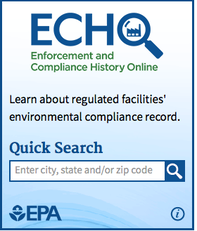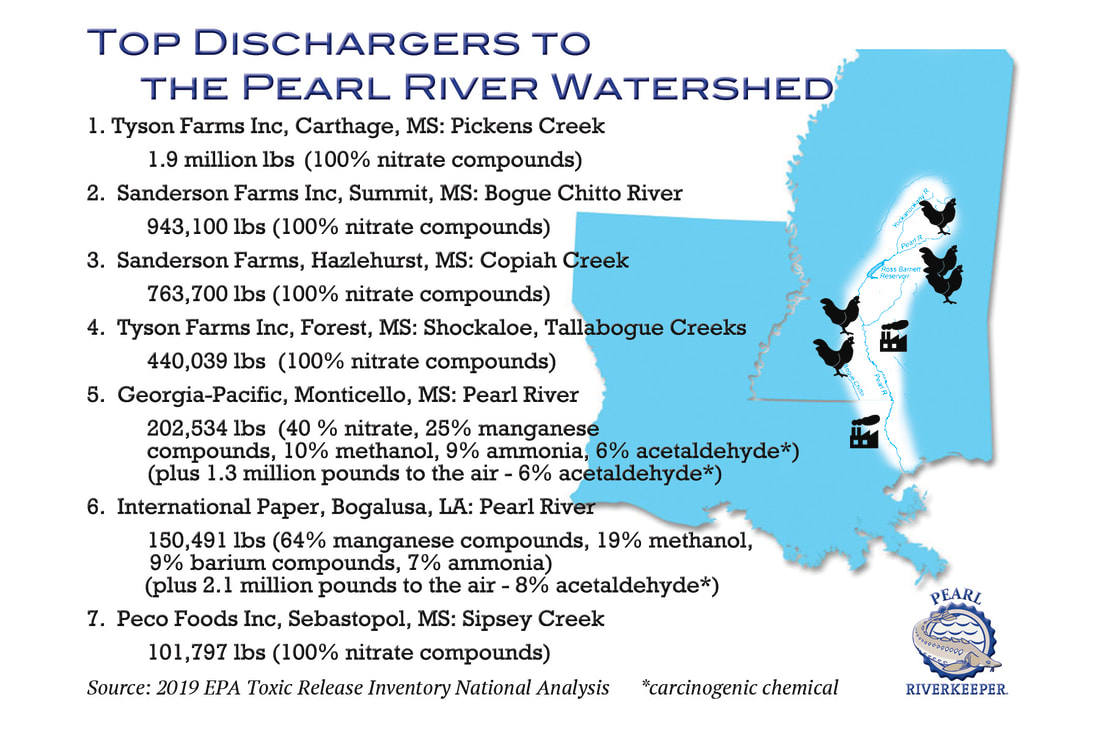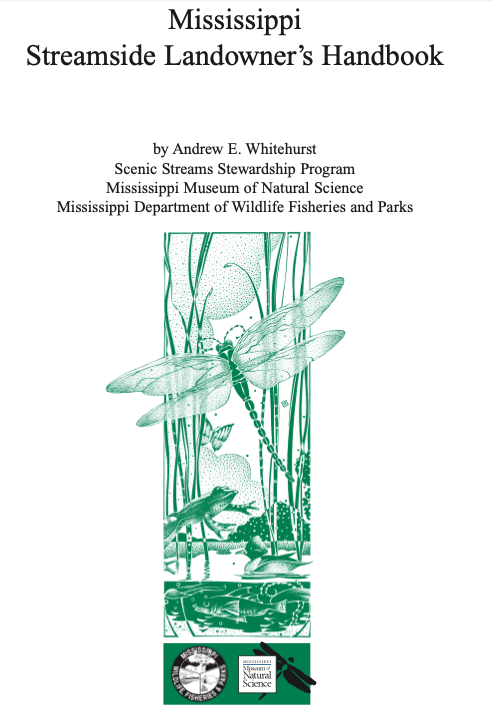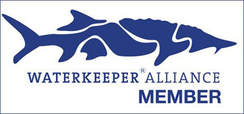Point Source Pollution
|
The U.S. Environmental Protection Agency (EPA) defines point source pollution as “any single identifiable source of pollution from which pollutants are discharged", such as a factory, sewage treatment plant, pipe or ditch. Factories, including paper mills, chemical, electronics and automobile manufacturers, that discharge from a point source must apply for a National Pollutant Discharge Elimination System (NPDES) permit in order to discharge one or more pollutants into a waterbody.
Check out the EPA ECHO database to view enforcement and compliance statistics for permitted facilities in your region. |
PERMIT TO POLLUTE
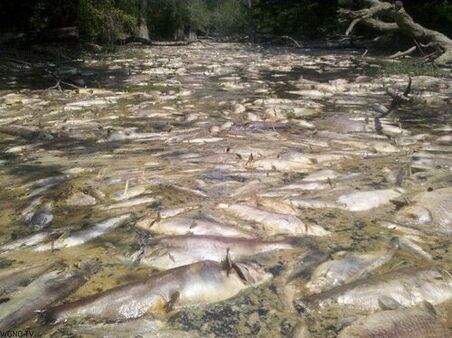 Pearl River Fish Kill, WGNO News
Pearl River Fish Kill, WGNO News
In 2011, the Temple-Inland, Inc paper mill in Bogalusa, Louisiana, released a high concentration of "black liquor" into the Pearl River, causing a massive fish kill that spread over 60 miles. An estimated 2 million fish and mussels, including endangered species such as the Inflated Heelsplitter Mussel and the Gulf Sturgeon, were decimated. Private wells and local water supply along the Pearl River were impacted by the toxins which eventually spread all the way to Lake Pontchartrain.
Non-Point Source Pollution
|
Nonpoint source pollution generally results from land runoff, precipitation, atmospheric deposition, drainage, seepage or hydrologic modification. Nonpoint source (NPS) pollution, unlike pollution from industrial and sewage treatment plants, comes from many diffuse sources. NPS pollution is caused by rainfall or snowmelt moving over and through the ground. As the runoff moves, it picks up and carries away natural and human-made pollutants, finally depositing them into lakes, rivers, wetlands, coastal waters and ground waters.
Nonpoint source pollution can include:
States report that nonpoint source pollution is the leading remaining cause of water quality problems. The effects of nonpoint source pollutants on specific waters vary and may not always be fully assessed. However, we know that these pollutants have harmful effects on drinking water supplies, recreation, fisheries and wildlife. |

